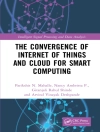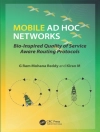Today’s booming expanse of personal wireless radio communications is a rich source of new challenges for the designer of the underlying enabling te- nologies. Personal communication networks are designed from a fundam- tally different perspective than broadcast service networks, such as radio and television. While the focus of the latter is on reliability and user comfort, the emphasis of personal communication devices is on throughput and mobility. However, because the wireless channel is a shared transmission medium with only very limited resources, a trade-off has to be made between mobility and the number of simultaneous users in a con?ned geographical area. Accord- 1 ing to Shannon’s theorem on channel capacity, the overall data throughput of a communication channel bene?ts from either a linear increase of the tra- mission bandwidth, or an (equivalent) exponential increase in signal quality. Consequently, it is more bene?cial to think in terms of channel bandwidth than it is to pursue a high transmission power. All the above elements are embodied in the concept of spatial ef?ciency. By describing the throughput of a system 2 in terms of bits/s/Hz/m , spatial ef?ciency takes into account that the use of a low transmission power reduces the operational range of a radio transmission, and as such enables a higher reuse rate of the same frequency spectrum.
Tabla de materias
Digital Communications Over Analog Channels.- Modulation-Aware Error Coding.- Modulation-Aware Decoding: Signal Reconstruction.- Benefits of ISI in the Indoor Environment.- Pulse-Based Wideband Radio.- Reference Design of a Pulse-Based Receive Unit.- Nonlinear Loaded Open-Loop Amplifiers.












